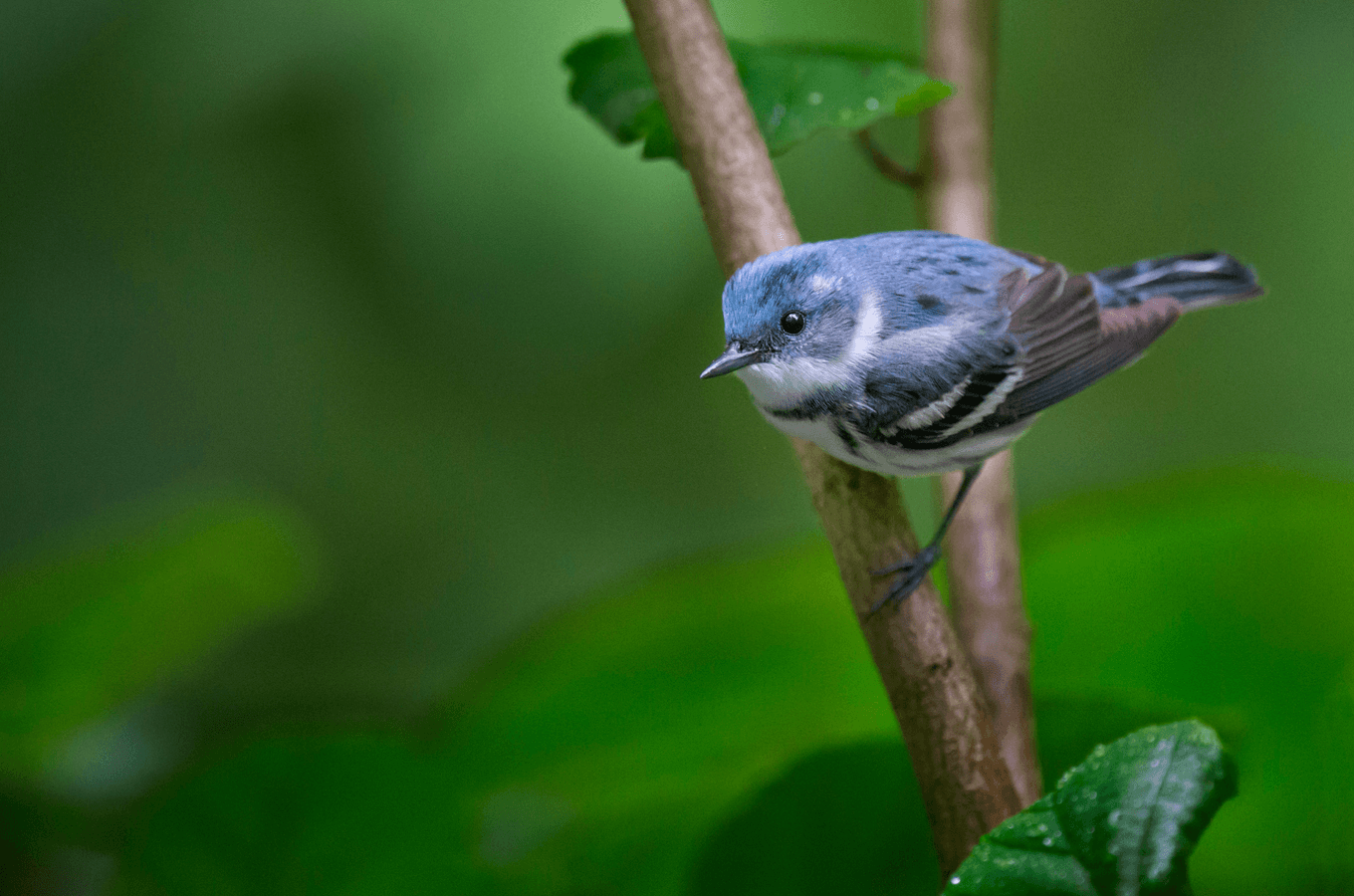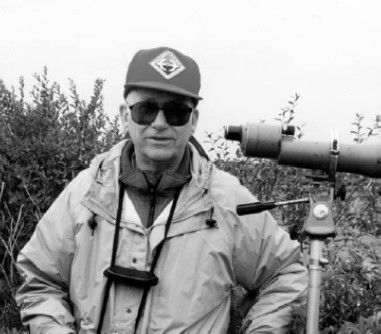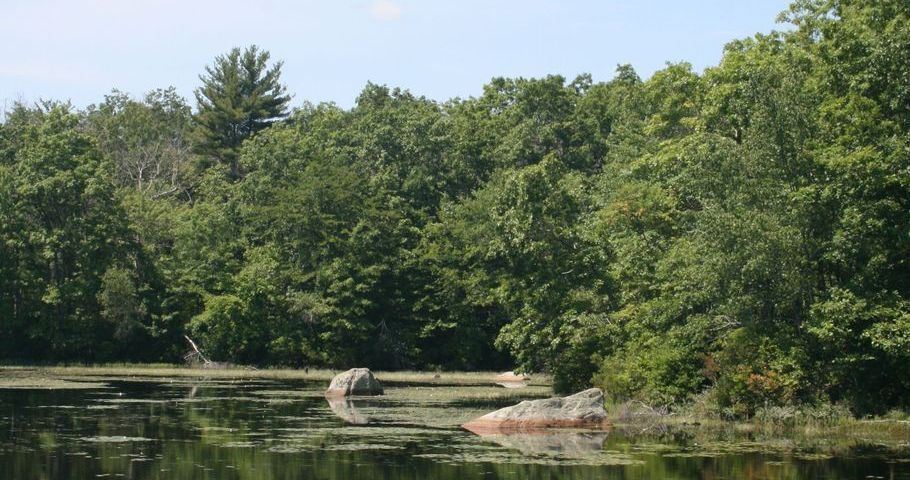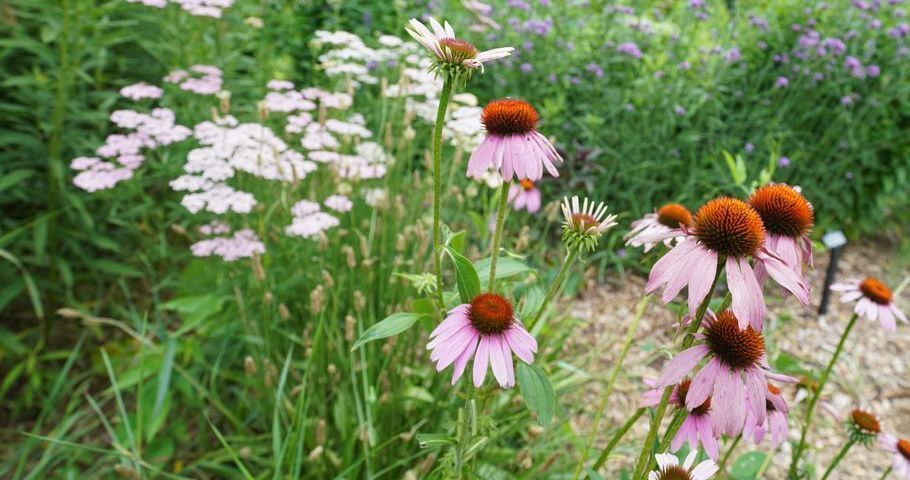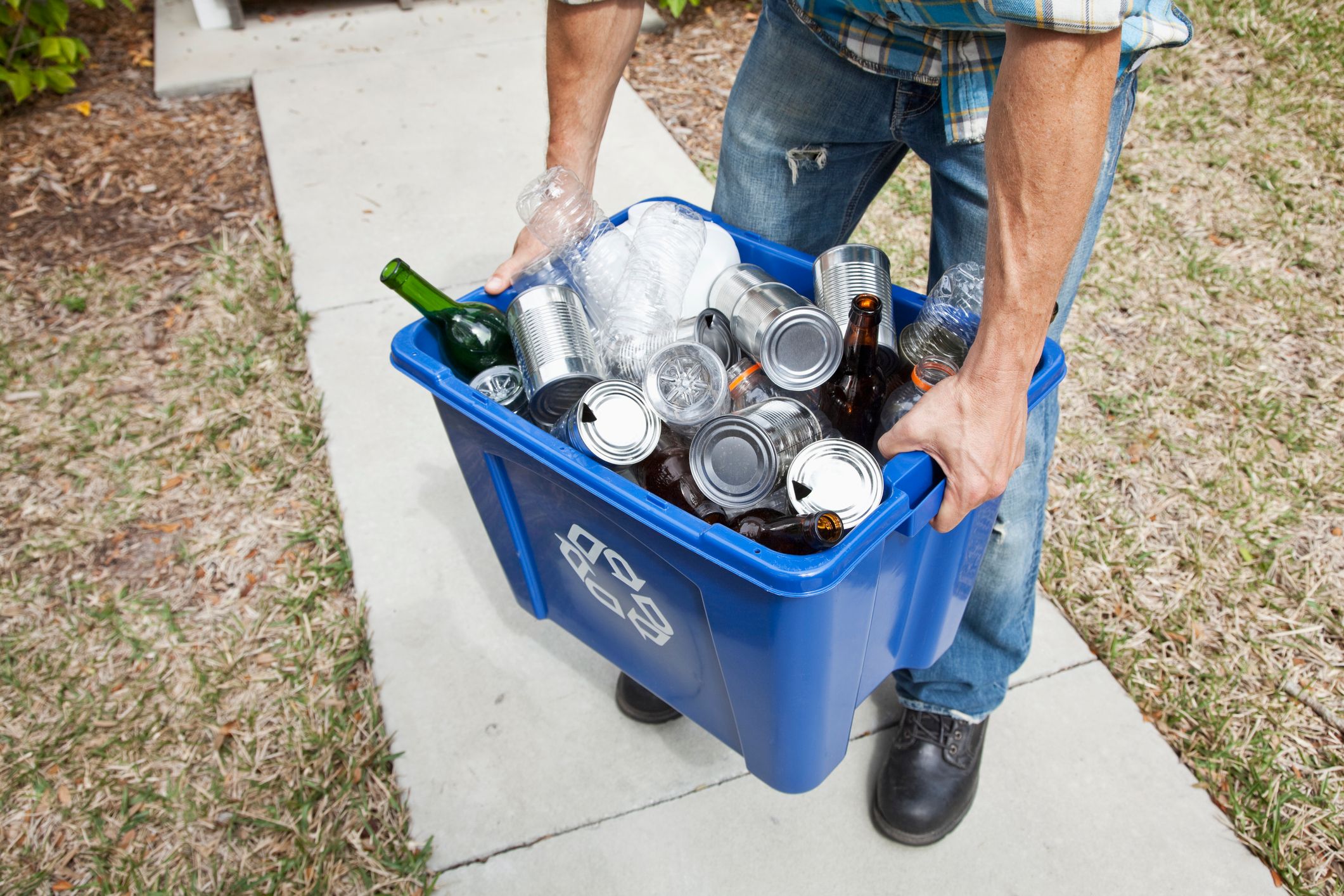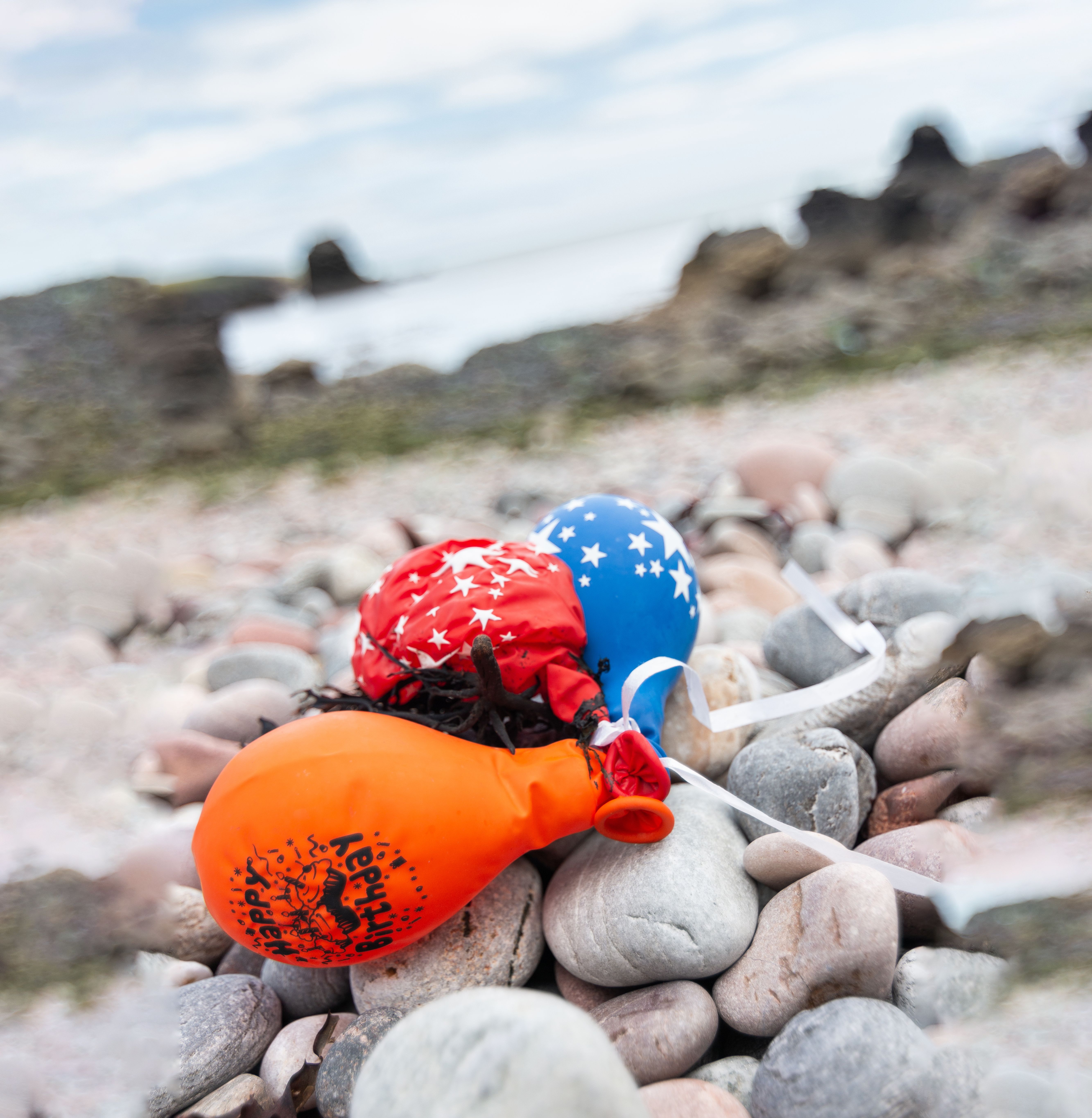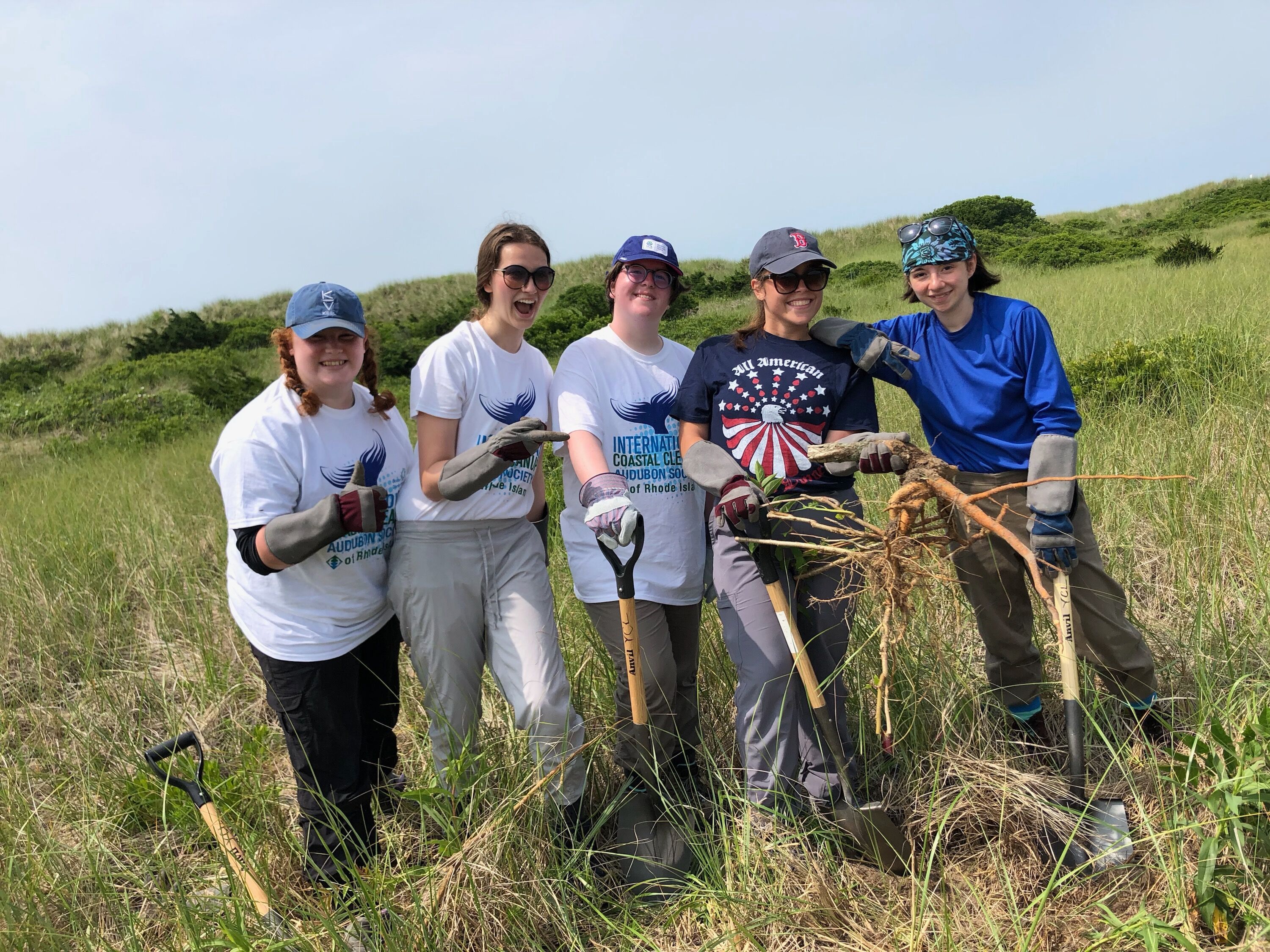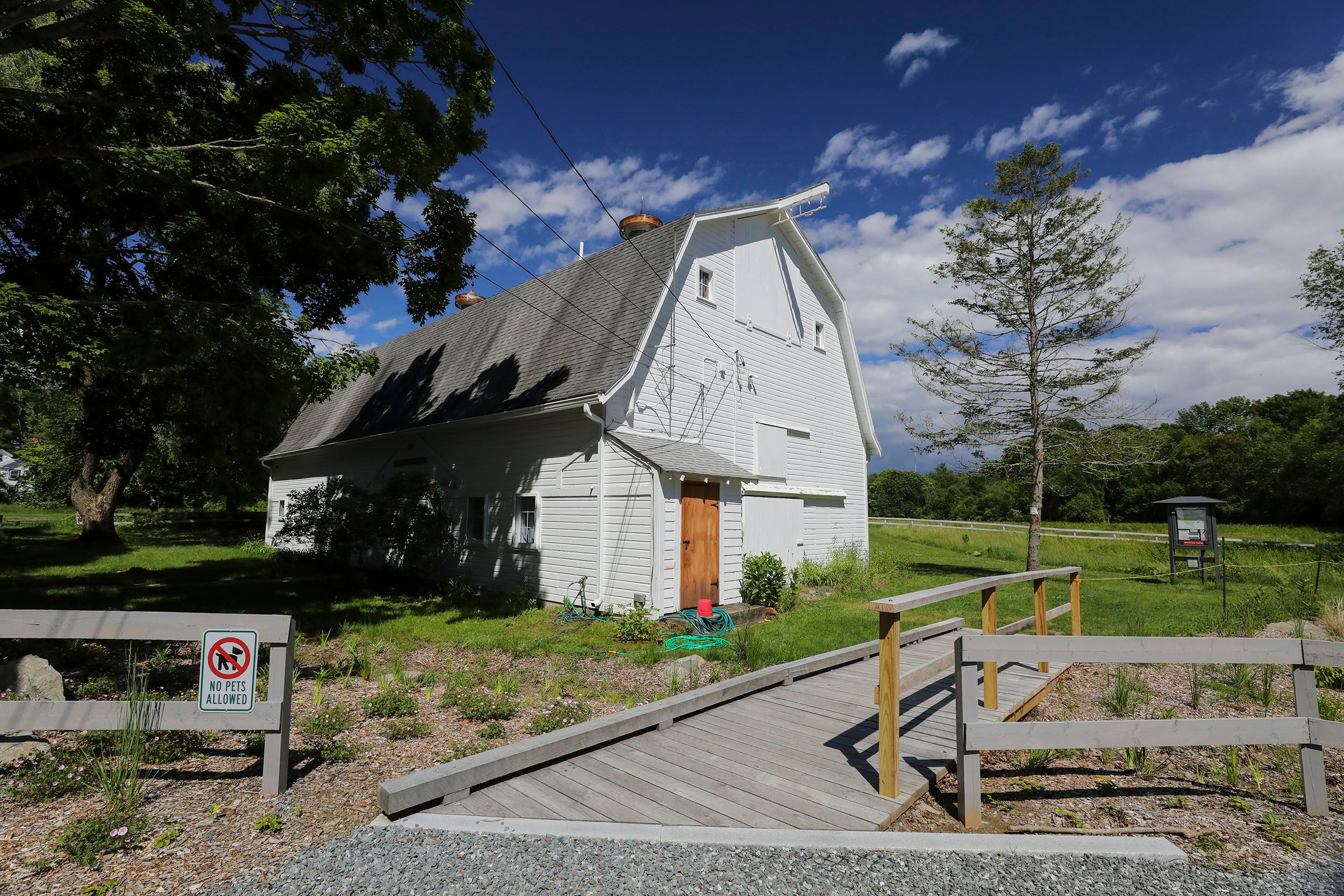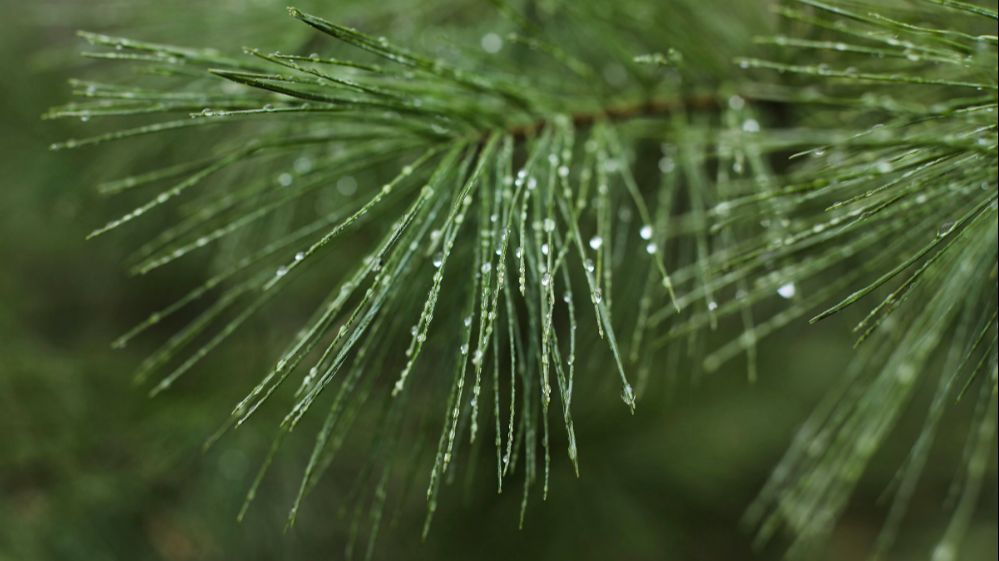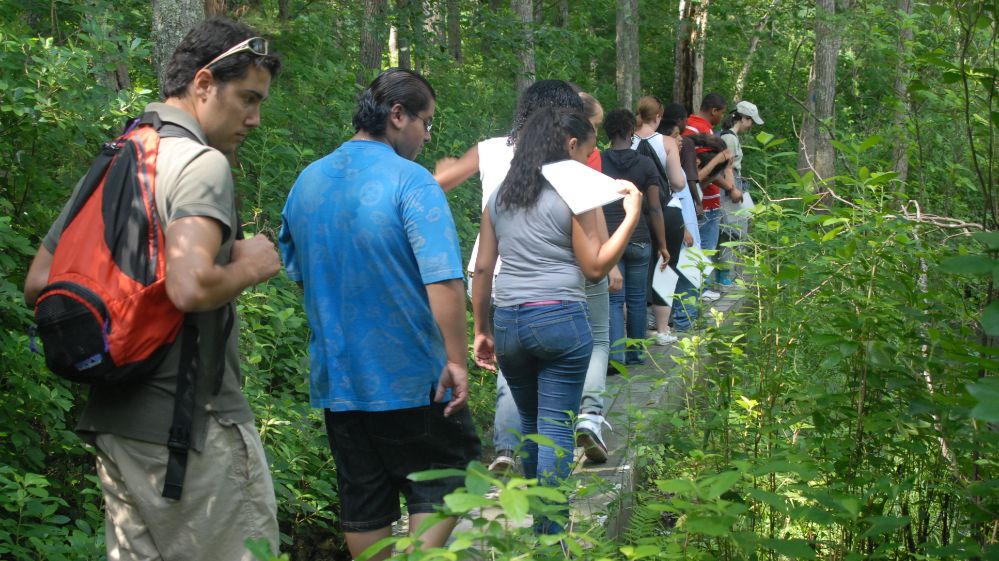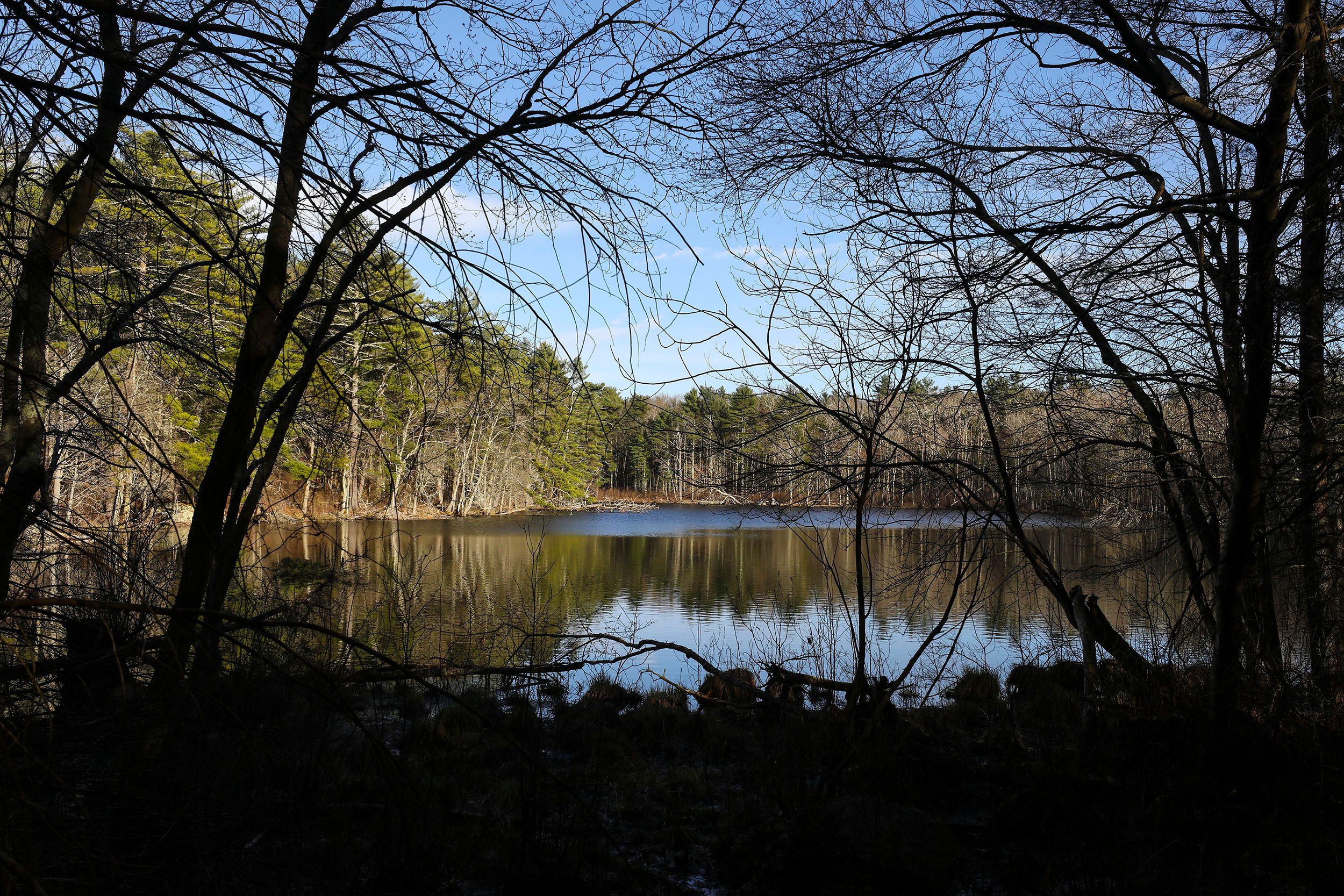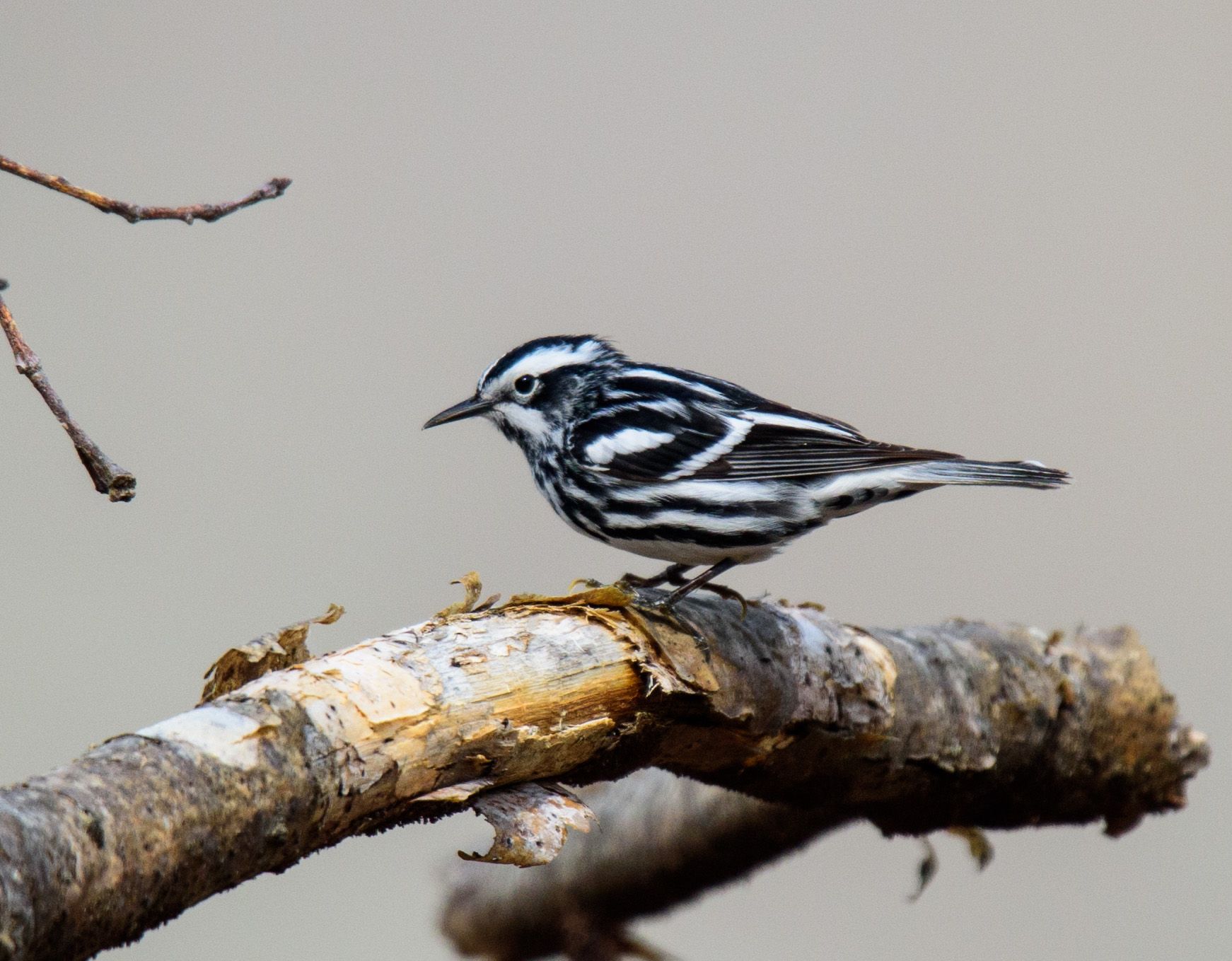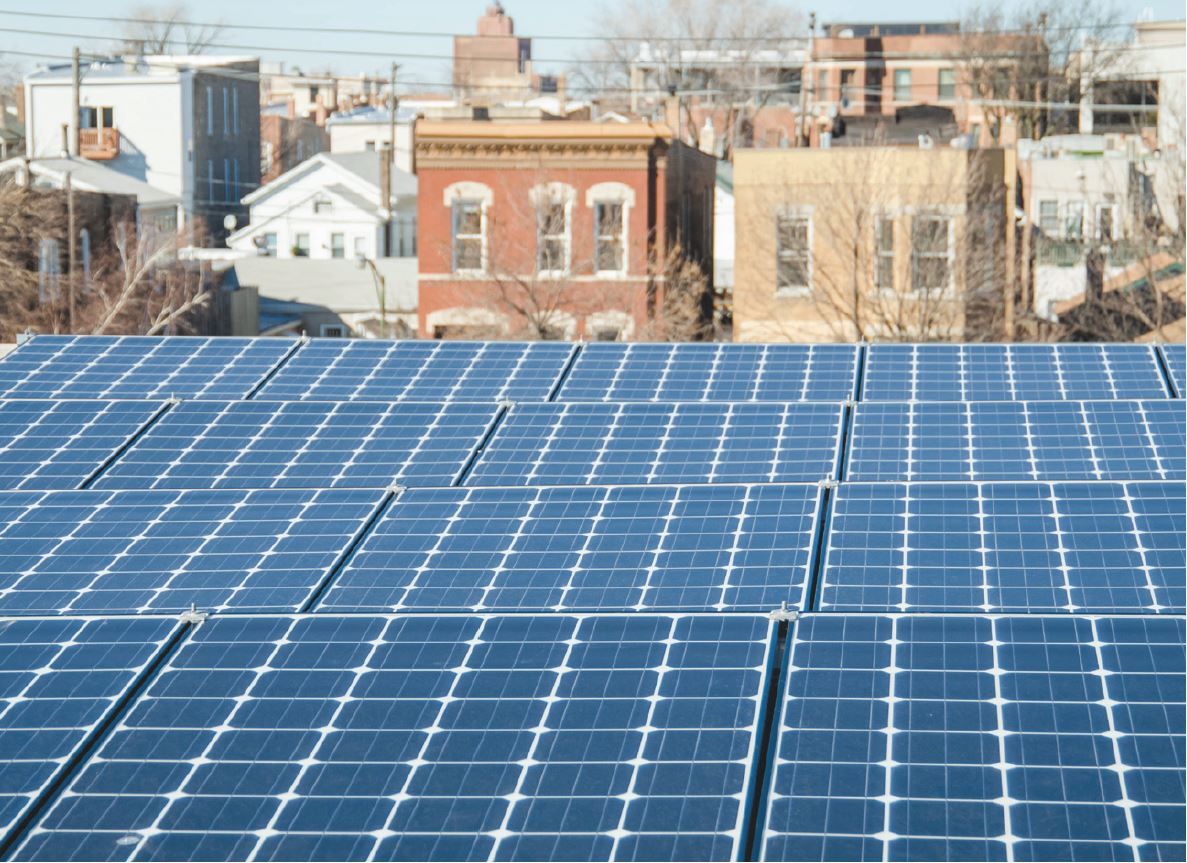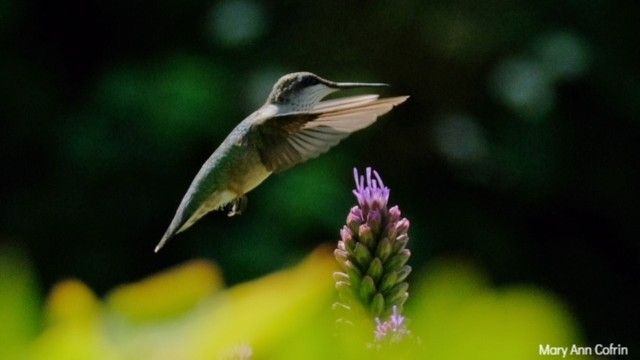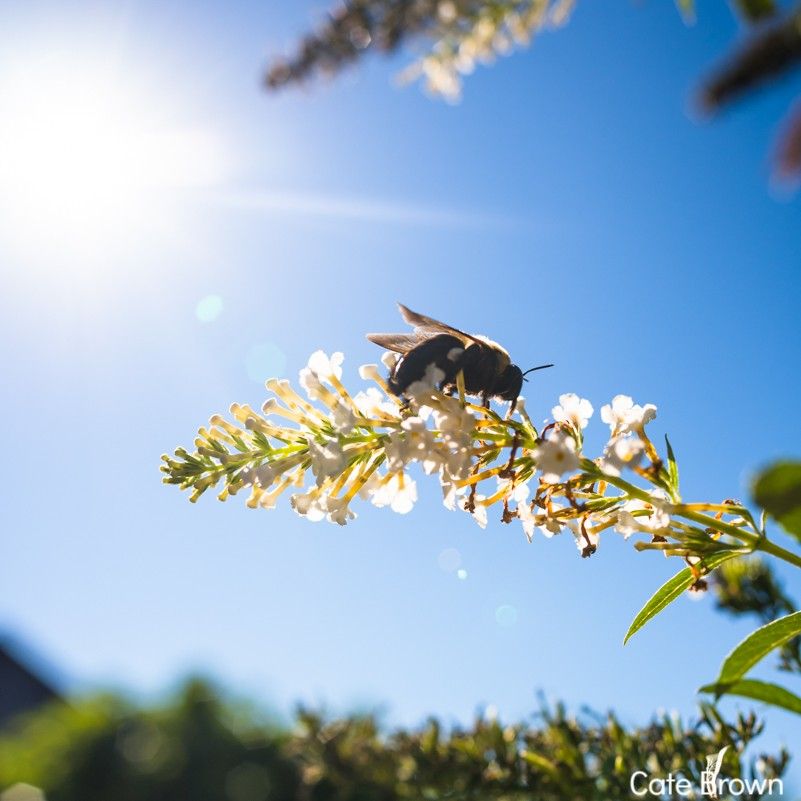

While humans may take their cozy homes for granted when winter sets in, the strategies that wildlife have developed to cope with the plunging temperatures, biting wind and lack of food are as creative and innovative as they are necessary.
A bird’s food may be small but it plays a clear and critical role in species survival, not to mention habitat conservation and ecosystem balance, both important for wildlife and humans alike. This effort to create a “Bird Food Baseline” is part of the overall RI Audubon Avian Research Initiative.
Birds' lives are tough and their work is nonstop. The very least we can do to ensure their success is to make their jobs as easy as possible…by protecting habitats and resources critical to their needs.
Twelve years after the opening of the Maxwell Mays Wildlife Refuge, Audubon has embarked on what might fit in as the final detail in the story of Mays’ legacy—as an artist, a conservationist, a lover of wildlife, and a philanthropist.
Soil is the living, breathing component of habitats that support terrestrial communities worldwide. Natural scientists, gardeners and farmers appreciate soil, yet we still have much to learn about this crucial resource. Audubon practices soil conservation in many ways. Whether you are a gardener or a large landowner, you can adopt similar conservation actions.
Through donor support of any kind, Audubon can fulfill its mission of educating five-year-olds about the wonders of wildlife, managing habitat for declining pollinator species, or permanently protecting forests, fields, and wetlands, it is connecting its founding legacy to what lies ahead.
In the spring of 2023, the Audubon Society of Rhode Island joined over 1,800 conservation collaborators with the establishment of its first MOTUS tower. The tower itself will collect data on birds, bats and insects that have been fitted with coded tags as they pass overhead during periods of movement!
Several years of data analysis have pinpointed western Rhode Island as a hotspot for migratory stopovers. Although this may be the best time of year for us to break out our binoculars and hit the trails, the reality is that migration is an extremely perilous and strenuous time for birds. How can we help migratory birds succeed as they pass through our state?
The Stormwater Mural Project continues for a third year, this time with a focus on rain barrels! This unique partnership between Audubon, the Stormwater Innovation Center (SIC), and The Providence Parks Urban Wildlife Refuge Partnership brings stormwater education sessions to schools and offers students a chance to visit Roger Williams Park for field trips.
It has been a year since Audubon Educator Kate Swain and Senior Director of Education Lauren Parmelee embarked on a new initiative, “Taking Root: Nature-based Learning for All.” This pilot program aims to fulfill Audubon’s mission of connecting all people with nature—in this case, specifically students with special needs. With input from teachers, parents, and the students themselves, the end goal is to develop a well-funded, robust, barrier-free program that will serve students throughout the state.
More than half a century after the first global Earth Day celebration, one thing has remained constant: humanity’s dependence on the burning of fossil fuels such as natural gas, oil, and coal. A transformational shift away from fossil fuels—whether at the global, national, or state level—calls for change from society’s “status-quo” and economy-wide climate action.
May is absolutely one of my favorite times of the year. Migration is in full swing, and the flowering trees bring back the Orioles! In Rhode Island we are lucky to have two different species: the Baltimore and Orchard Orioles. Attract these sweet, colorful birds to your backyard by planting flowering trees.
The Audubon Society of Rhode Island has been instrumental in protecting these species through direct action as well as by saving habitat that supports them. In honor of Endangered Species Day (May 19, 2023), learn more about this landmark piece of legislation!
Each spring in forests and fields throughout Rhode Island, several plant species appear early, just as the days warm, and disappear before the summer. Spring ephemerals are key forest community members, yet their brief appearances are often overlooked.
Hugh Willoughby served the Audubon Society as a volunteer in many capacities. He was a former Board member, property committee member, and an enthusiastic Chairman of the Field Trip Committee in the 1970s and 1980s. He was a long-time leader of Block Island Weekends and of numerous and varied natural history walks. He was known for his expertise in birds, mammals, dragonflies, wildflowers, and geology (and a long list of other fields of study). He was also known for still remembering the names of most, if not all, the participants on his many walks.
From the start, the decline in the bird population (revealed from multiple international studies) was a given. From there, the Audubon initiative was launched as a fact-finding mission, to go in and find out more about how the Audubon Society of Rhode Island could help species in decline.
At wildlife refuges across Rhode Island, Audubon manages hundreds of acres of open fields for birds and wildlife. Without proper management, most of these breaks in the forested landscape would revert to shrub thickets and eventually forest in the process of field succession.
Restoration and community engagement are key for climate resiliency. Thanks to Restore America’s Estuaries Southern New England Program Watershed Implementation Grant, retrofits on existing green infrastructure in Roger Williams Park as well as community training sessions and other engagement opportunities are coming to the Stormwater Innovation Center in 2023.
With intentional investments and incentives to level the costs of building solar on previously disturbed land or “preferred sites”—such as gravel pits, landfills, commercially zoned properties, rooftops, and parking lots—forests can be protected and coexist with renewable energy and clean energy jobs.
Alfred Hawkes helped Audubon turn the lens from individual birds and species to the habitat they lived in and habitat protection. Today, Audubon continues With the growing climate crisis upon us, Audubon’s most critical fight to protect the environment, wildlife and people of Rhode Island, may have just begun.
A little over a year ago, Audubon created our Avian Research Initiative. Data collection is nearly complete and the late fall and winter will be spent analyzing and writing, with the goal of releasing the first “State of Our Birds” report at the beginning of 2023.
As fall turns to winter, most Warblers have left Rhode Island for warmer climates. But there is one that returns to our state in large numbers this time of year due to their unique ability to switch their diets with the seasons.
To support the acquisition of vital natural habitat in Rhode Island, Barbara Walsh and Earl Simson have generously donated $111,000 to Audubon, allowing the organization to strategically expand already protected areas and acquire other tracts of land for conservation.
Reflecting on a career spanning from 1999-2022. Thank you for your leadership, Larry!
Audubon partners with Brown University's Professor Nancy Jacobs in her "Birding Communities" course, a seminar exploring culture, socioeconomics, and gender identity in the context of birdwatching.
Did you know that wildlife populations across the globe have declined by 68% since 1970? This simple solution can turn the tide in the battle to protect the dwindling bird population to create a safer ecosystem for all living creatures.
The story of Audubon is the story of its educators. Since the beginning, Audubon has understood that awakening interest in nature in children is vital in the pursuit to protect bird life and other living things. Now, with the climate crisis upon us, science is now more important than ever.
Studies have shown that taking students outside has a range of benefits; Audubon Senior Director of Education Lauren Parmelee aims to create outdoor learning spaces in schools across Rhode Island. Read to learn more about how this project started.
Rhode Island is home to many different breeds of Swallows. Laura Carberry details the spectacle of Tree Swallow migration methods.
The Providence Stormwater Innovation Center has been awarded a Narragansett Bay Estuary Program Grant for green infrastructure monitoring in Providence; plus learn about the ongoing Storm Drain mural project in Providence schools!
Audubon has a rich history of preserving land. Learn about the stories of multiple land donors who helped shape Audubon's mission of land conservation and wildlife protection.
Humans have a long history of persecuting predators, sometimes even eradicating species. Many native predators were eliminated from New England through hunting and trapping for furs, exaggerated fear, and habitat destruction over the past several centuries but the perils of removing predators from habitats are well known in the science community.
Pollinator populations benefit from native plants, and birds do too. Discover a variety of perennials, annuals, shrubs, and tree to add to your backyard habitat.
Learn how Audubon tracks wildlife on their properties – allowing for both stunning photos and safety for the animals.
Have you wondered about the land conservation process? Do you have property that you are considering for land protection? Audubon' has a strategic approach for preserving land. Read about what factors go into the land conservation process.
The plants on your property can become a perfect habitat for wildlife. Dr. Scott Ruhren explains the process of how to efficiently and cost-effectively transform your yard, big or small.
Dr. Charles Clarkson notes that "few people know that Rachel Carson never lived to see the impact she had on this world." Rachel Carson's bold arguments inspired change, even if she never got to see them.
With growing evidence that neonicotinoid insecticides impact so much more than their intended targets, it is incumbent on us to spend time and energy scrutinizing their use in our state.
In 1897, a group of concerned citizens founded the Audubon Society of Rhode Island, invoking the name of John James Audubon. Although the modern Audubon movement is far removed from the man of which it is named, we recognize that the views held by John James Audubon and early environmental leaders have left a painful legacy for so many.
Audubon has a long history of rising and meeting the challenges of the day.
The most common reason we hear owls hooting is that they are defending territories and searching for mates. But owls make a lot of other calls and sounds too!
We’re already experiencing the climate crisis - right here in the Ocean State. A rapidly warming climate makes it challenging for migratory birds to adapt to the irreversible altering of habitat, food chains, pollinators and blooming seasons, and species interactions. But there can be optimism.
Audubon begins a new chapter in avian research and conservation. | Cover story by Todd McLeish for the Fall 2021 Audubon Report Issue
Audubon has always participated in and relied on science, and turned to research by experts to help inform our management practices, our stance in policy, and the kind of materials we offer in our educational programs.
Today the reality of climate change can seem overwhelming but Audubon’s strategic plan encourages us to view the world with an optimistic lens and to stay focused and driven towards the goals outlined.
As the colder weather approaches, many birds shift their behaviors and even food sources to survive the winter. While many migrate south, several species have developed amazing adaptations to survive the winter months.
Urban natural environments face unique hazards and are often impaired due to excessive levels of contaminants from stormwater, such as bacteria, oil, litter, fertilizer and pet waste. Learn how the Providence Stormwater Innovation Center is facing these issues with nature-based solutions.
Environmental organizations like Audubon have been promoting the “Your actions make a difference. Please do the right thing” message for decades. The COVID-19 pandemic is reminding us of the importance of community responsibility.
The Rhode Island legislature’s environmental work ended abruptly with the COVID-19 pandemic. Bills addressing climate change, plastics, other toxics like pesticides and PFAS, and solar siting that were introduced are not being considered this year.
Don’t get bored in our changed world, rise to the challenge and start looking at birds in a new way!
During the Covid 19 pandemic restrictions and statewide lock down, the Audubon wildlife refuges have been experiencing record-breaking levels of visitation, and it’s not surprising why.
Let's go birding with Laura Carberry! Head out into the forest before spring arrives, as that is when most of the Golden-crowned Kinglets will head north. If you find a mixed flock of birds, look for the flickering wings of a tiny songbird and listen for their high pitched chirps. Learn more about this fun little bird!
Approximately 62,500 tons of plastics ended up in the landfill in Rhode Island in 2015. Half of it could have been recycled through one of the state's recycling programs. Learn More
Let's go birding with Laura Carberry! It’s almost time to head out and search for one of the strangest shorebirds of New England, the American Woodcock. Learn more about these unique birds and register for a Woodcock walk!
An ecological art installation depicting future sea level rise now shares the diverse habitat at Audubon’s Touisset Marsh Wildlife Refuge in Warren, Rhode Island.
The Fight to Ban Plastic Bags, Straws and Balloon Releases | By Todd McLeish
Plastics are Filling Oceans and Choking Wildlife | A story for the Audubon Report by Todd McLeish.
LET'S GO BIRDING | This bird is absolutely amazing to observe with a crested head and a black mask. The Cedar Waxwing truly looks as though an artist may have pulled it from a painting. So where should you look to find them?
Editorial by Meg Kerr, Senior Director of Policy
Since 1982, Audubon has offered popular summer nature camps for children at the Caratunk Wildlife Refuge in Seekonk, MA.
This is a good time to look at the websites and postings of our elected officials. Let those leaders that focus on environmental issues know you appreciate it. Let our leaders know that the environment is a priority, and tell them that you want to see more positive outcomes in the 2020 session.
Audubon educators suggest ways to keep your kids engaged with easy and fun outdoor explorations!
Seven environmentally minded young women from Rhode Island high schools have formed the 2019 Youth Conservation League. They teamed this summer to gain valuable experience while helping numerous conservation groups with their service.
Renovation and restoration at Audubon Society of Rhode Island's Seekonk, MA Caratunk Wildlife Refuge brings renewal to this hiking hotspot.
LET'S GO BIRDING | By Audubon Naturalist Laura Carberry
Saltmarsh sparrows, Oystercatchers and a recovering marsh habitat in Quonochontaug Salt Marsh in Charlestown, RI!
For wildlife. For pollinators. For the environment. | People are often reluctant to change manicured green spaces into wild spaces but filling the built environment with rain gardens and pollinator meadows will help us create more resilient communities and supports wildlife and pollinator.
An editorial by Meg Kerr, Senior Director of Policy | Our forests provide innumerable services to humans and wildlife. Maintaining woodlands in rural areas of the state and promoting tree planting in suburban and urban neighborhoods is part of the climate change solution.
Learning about forests is important for all ages, so the key role that forests play in a healthy environment is a frequent talking point in many of Audubon’s educational programs.
Forests protect the water quality in local aquifers and sequester carbon from the atmosphere. They provide vital habitat, cool the environment, reduce soil erosion and provide a stress-free place for rest, recreation and rejuvenation. Audubon wants see forests in the language of the law, because when natural resources are referenced in RI laws, forests are absent, as if they don’t even exist.
Let's Go Birding by Audubon Naturalist Laura Carberry | Colorful passerines are what birders crave. They are small, flit around the treetops and can be incredibly hard to find: but the chase is what keep us coming back for more. Here are some tips on where to find them this season.
Audubon supports the Rhode Island Woodland Preservation and Stewardship Act of 2019.
So, what's the plan? An editorial piece by Audubon Senior Director of Policy Meg Kerr.
Audubon dedicates significant financial and human resources to our programs and our animal ambassadors, but we think the investment is well worth it. The outcome we aim for is environmental literacy, where people understand and appreciate birds, wildlife and the natural world and then will provide the necessary support to help us protect it.
The newest additions to Audubon’s animal ambassadors are an Eastern Screech-Owl named Penny whose feathers are the color of her namesake coin and a young Common Raven named Lucy, who was found on the ground last summer at a major road intersection in Connecticut.
This winter, don't forget to include plants for pollinators in your spring gardening plans! | An editorial by Audubon Senior Director of Policy Meg Kerr
Visitors who view the conservation staff as the face of Audubon should not be surprised to find them mowing grass, repairing kiosks, building boardwalks or doing innumerable other tasks that some may not consider conservation work. But while they are happy to answer questions, identify plants and do whatever else may be necessary to help visitors enjoy their experience on the property, there is always more to do.
Five years ago, Audubon set a goal to attain accreditation with the national Land Trust Alliance (LTA) to prove to ourselves, and our supporters, that we are indeed (and not just in theory) careful and proper stewards of the land. This accreditation is the national gold standard for non-governmental organizations that conserve land.
An editorial by Audubon Senior Director of Policy Meg Kerr, on the diversity in background, skills and talents amongst people who care deeply about the environment. We can all appreciate the natural world and commit to its protection - even if we do not know all the names.
Each fall thousands of raptors fly south through New England on their way to wintering grounds. The peak time to observe the hawks is typically mid-September through mid-October. Rhode Island, Massachusetts and Connecticut all have great places to watch this wonderful migration.
The Rhode Island Birding Atlas is a five-year effort which will help to answer some big questions upon its completion: How have bird species and distribution changed since the previous study was completed over 30 years ago? How have bird habitats been altered?
Come immerse yourself in the tropics and experience the amazing diversity of bird life in Panama. Upcoming trips are December 6 – 11, 2018 or February 7 – 12, 2019 and are led by Professional Ornithologist and Audubon Board Member, Charles Clarkson, PhD. Informational sessions are available!
LET’S GO BIRDING By Laura Carberry
Often when we think of pollinators, we conjure images of bees and butterflies. But there is another, often over-looked pollinator darting around Rhode Island...
Audubon’s policy department collaborates with many partners across the state to track environmental issues and develop successful advocacy strategies. Rhode Island’s environmental community works exceptionally well together, recognizing the power of many voices working together as one. An Editorial from the Spring 2018 Report by Meg Kerr, Audubon Senior Director of Policy
Audubon Designs and Monitors Pollinator Habitat by Hugh Markey
From the 2018 Spring Report
Audubon Advocacy Gives a Voice to Pollinators in Crisis by Todd McLeish
From the 2018 Spring Report
The 2018 legislature session is back in session. It is easy to think that advocacy ends when a good bill passes. But many times, passage of bills means that our work is just beginning. Editorial by Meg Kerr, Senior Director of Policy
Through Environmental Education, Audubon builds the next generation of conservationists. An article from the 2018 Winter Report Issue by Todd McLeish.
An editorial by Meg Kerr, Senior Director of Policy. Audubon’s 2017 legislative year was very successful, setting the stage for important work
this fall and winter.
An Audubon Report story by Todd McLeish from the 2017 Fall Report, supporting the Audubon 2017 series on climate change.
Part Four of the Audubon 2017 Report Series on Climate Change by Todd McLeish.
More Than Meets the Eye… Audubon Refuges are Nature’s Defense Against Climate Change. An Audubon Report story by Todd McLeish from the 2017 Summer Report, supporting the Audubon 2017 series on climate change.
Part Three of the Audubon Report 2017 Series on Climate Change by Todd McLeish
An editorial by Audubon Senior Director of Policy Meg Kerr on greening your personal lifestyle. Taken from the Audubon Summer 2017 Report Issue.
Audubon has long supported green, nature-based solutions to reduce stormwater runoff. Learn about Rhode Island's past, present and future efforts to improve water quality in the State.
Walter J. Berry of the U.S. Environmental Protection Agency reports on the status of the Seaside Sparrow. Like the Saltmarsh Sparrow, Seaside Sparrows are threatened by a loss of habitat due to climate change. An article from Audubon's Spring 2017 Report, supporting the Audubon 2017 Report series on climate change.
Part Two of the 2017 Audubon Report Series on Climate Change By Todd McLeish.
Download, view and share our infographic on climate change. What causes climate change? What are the results? What can you do?
Audubon’s Kingston Wildlife Research Station Records Bird Population and Migration Data. An article By Hugh Markey from Audubon's Winter 2017 Report, supporting the Audubon 2017 Report series on climate change.
Part One of the Audubon 2017 Report Series on Climate Change by Todd McLeish.
Support Our Work
Your generosity will help sustain and grow our conservation, education, and advocacy efforts right here in Rhode Island!
Visit Us
Start exploring nearly 10,000 acres of natural habitat across Rhode Island and nearby Massachusetts.
Programs and Events
Get outside and learn about the natural world!

